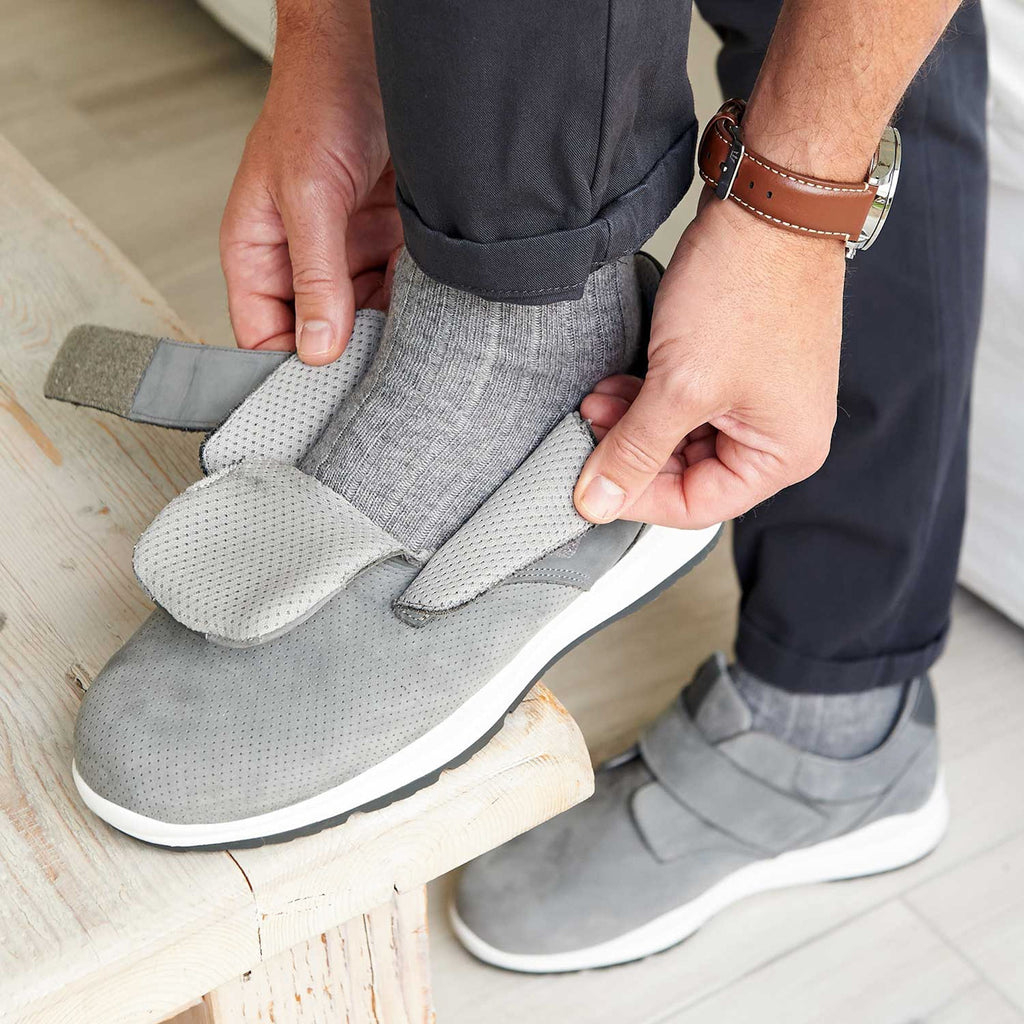When shopping for wide or orthopedic shoes, you’ll often see codes like E, 2E, 4E, EV, V, 6V, and more on sizing charts.
But what do these letters and numbers actually mean?
Don’t worry — this guide breaks it all down so you can find the perfect width and enjoy all-day comfort.
Why Width Matters as Much as Length
Most people know their shoe size (e.g., 8, 9, 10) but don’t pay enough attention to width. A shoe that’s too narrow or too wide can lead to:
-
Friction, blisters, or pressure points
-
Toe or forefoot pain
-
Premature shoe wear
-
General discomfort — especially if you have swelling, deformities, or sensitive feet
Choosing the right width gives you a secure, comfortable fit, without squeezing or slipping.
Understanding Width Letters: E, 2E, 4E…
In North America, shoe widths are commonly indicated by letters:
| Code | Women’s Width | Men’s Width | Description |
|---|---|---|---|
| B | Standard | Narrow | “Regular” for women |
| D | Wide | Standard | “Regular” for men |
| E | Extra wide | Wide | Roomier fit |
| 2E | X-Wide | Extra Wide | For wider feet or mild swelling |
| 4E | XX-Wide | X-Extra Wide | For very wide feet or significant swelling |
| 6E+ | Extra-extra wide | — | For specialised or orthotic needs |
The higher the number before the “E”, the wider the shoe.
For example, 4E is considerably wider than E.
What Do EV, V, 2V, 6V Mean?
Some brands, particularly British and orthopedic brands like Easy B, use a “V” system instead of the North American E system.
These codes indicate both width and adjustability.
| Code | Approximate Width | Description |
|---|---|---|
| V / EV | E to 2E | Adjustable standard to wide fit |
| 2V | E to 4E | Wide to extra wide, flexible fit |
| 6V | 6E to 8E | Very generous width and volume |
“V” stands for Variable Fit: the shoe is designed to accommodate multiple widths thanks to adjustable features (like Velcro straps, removable insoles, or stretch uppers).
For example:
-
A 2V shoe can comfortably fit someone who usually wears E, 2E, or even 4E, depending on the adjustment.
-
A 6V shoe provides exceptional volume — ideal for very swollen feet, significant deformities, or thick orthotics.
Real-Life Example
Let’s take two Easy B models:
-
👟 Model A – 2V: Great for wide or extra-wide feet. If you usually wear 2E or 4E, this adjustable design will give you flexibility and comfort.
-
👟 Model B – 6V: Built for extremely voluminous feet or medical conditions. Perfect if you need extra space for thick orthotics or have significant swelling.
Quick Reference Chart
| Code | Width Type | Best For… |
|---|---|---|
| E | Wide | Slightly wider than average feet |
| 2E | Extra Wide | Wide feet, mild swelling |
| 4E | Ultra Wide | Very wide or swollen feet |
| 6E+ | Extra-extra Wide | Medical / orthotic needs |
| V / EV | E to 2E | Variable fit, standard to wide |
| 2V | E to 4E | Wide to extra wide, adjustable |
| 6V | 6E to 8E | Maximum volume, extreme width |
How to Choose the Right Width for You
-
Measure your feet at the end of the day (when they’re most swollen).
-
Measure the widest part of your foot (usually across the ball).
-
Compare your measurements with our sizing chart.
-
If you’re between widths → go wider to avoid pressure points.
-
If you wear orthotics, allow for extra space by selecting a wider fit.
Still unsure? Contact our team — we’ll help you find your perfect fit
Pro Tip
If you use custom orthotics, consider going one width up from your natural foot width to allow enough room inside the shoe.
Conclusion
At first, codes like E, 2E, 4E, EV, 2V, 6V might seem confusing — but once you understand them, choosing the right fit becomes easy.
With the right width, you’ll experience better comfort, less pain, and longer-lasting shoes.
Check out our size guide and explore our Easy B, Zeba, and Foreli collections — designed to offer style and comfort for every foot width.

